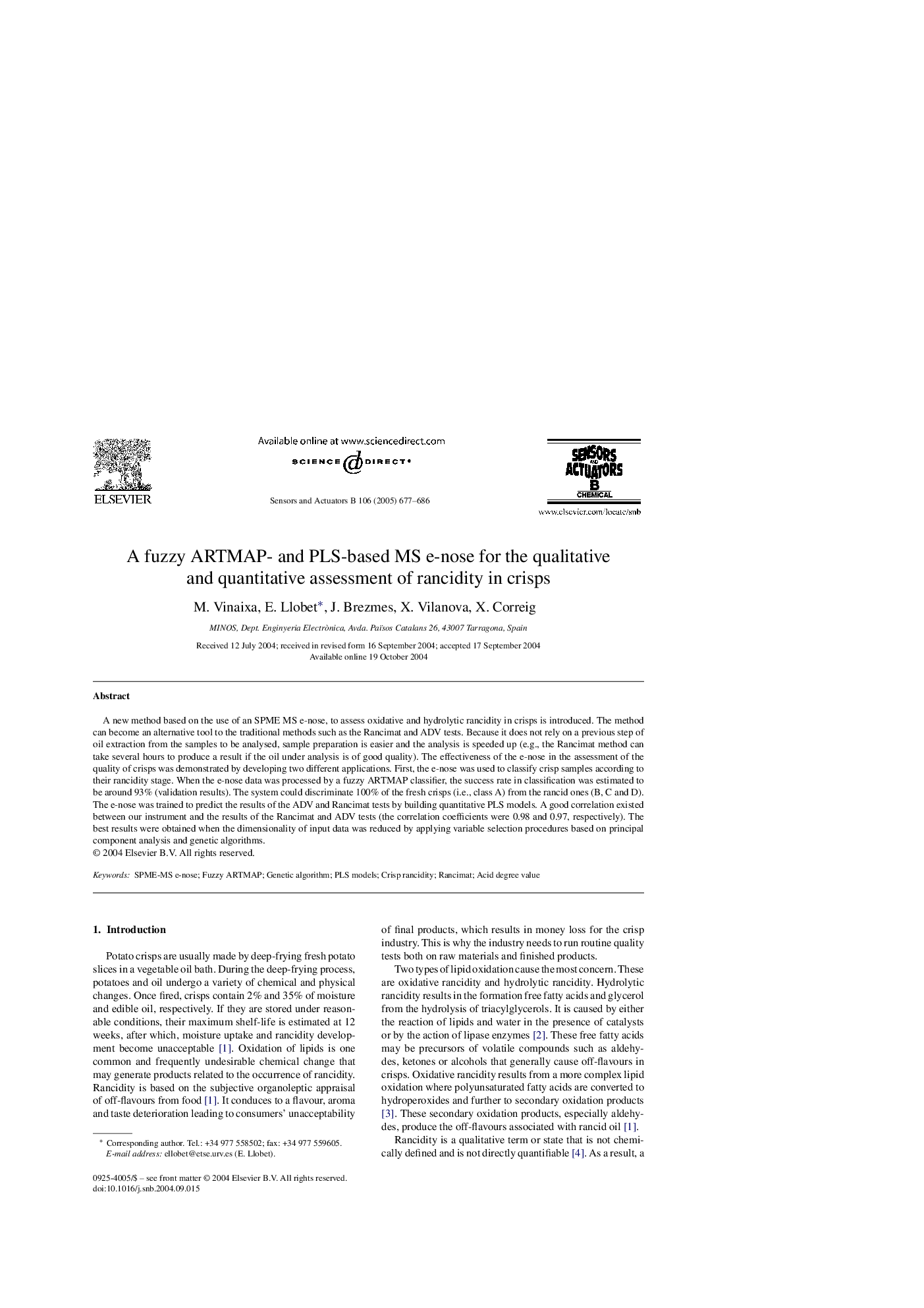| Article ID | Journal | Published Year | Pages | File Type |
|---|---|---|---|---|
| 10410974 | Sensors and Actuators B: Chemical | 2005 | 10 Pages |
Abstract
A new method based on the use of an SPME MS e-nose, to assess oxidative and hydrolytic rancidity in crisps is introduced. The method can become an alternative tool to the traditional methods such as the Rancimat and ADV tests. Because it does not rely on a previous step of oil extraction from the samples to be analysed, sample preparation is easier and the analysis is speeded up (e.g., the Rancimat method can take several hours to produce a result if the oil under analysis is of good quality). The effectiveness of the e-nose in the assessment of the quality of crisps was demonstrated by developing two different applications. First, the e-nose was used to classify crisp samples according to their rancidity stage. When the e-nose data was processed by a fuzzy ARTMAP classifier, the success rate in classification was estimated to be around 93% (validation results). The system could discriminate 100% of the fresh crisps (i.e., class A) from the rancid ones (B, C and D). The e-nose was trained to predict the results of the ADV and Rancimat tests by building quantitative PLS models. A good correlation existed between our instrument and the results of the Rancimat and ADV tests (the correlation coefficients were 0.98 and 0.97, respectively). The best results were obtained when the dimensionality of input data was reduced by applying variable selection procedures based on principal component analysis and genetic algorithms.
Related Topics
Physical Sciences and Engineering
Chemistry
Analytical Chemistry
Authors
M. Vinaixa, E. Llobet, J. Brezmes, X. Vilanova, X. Correig,
